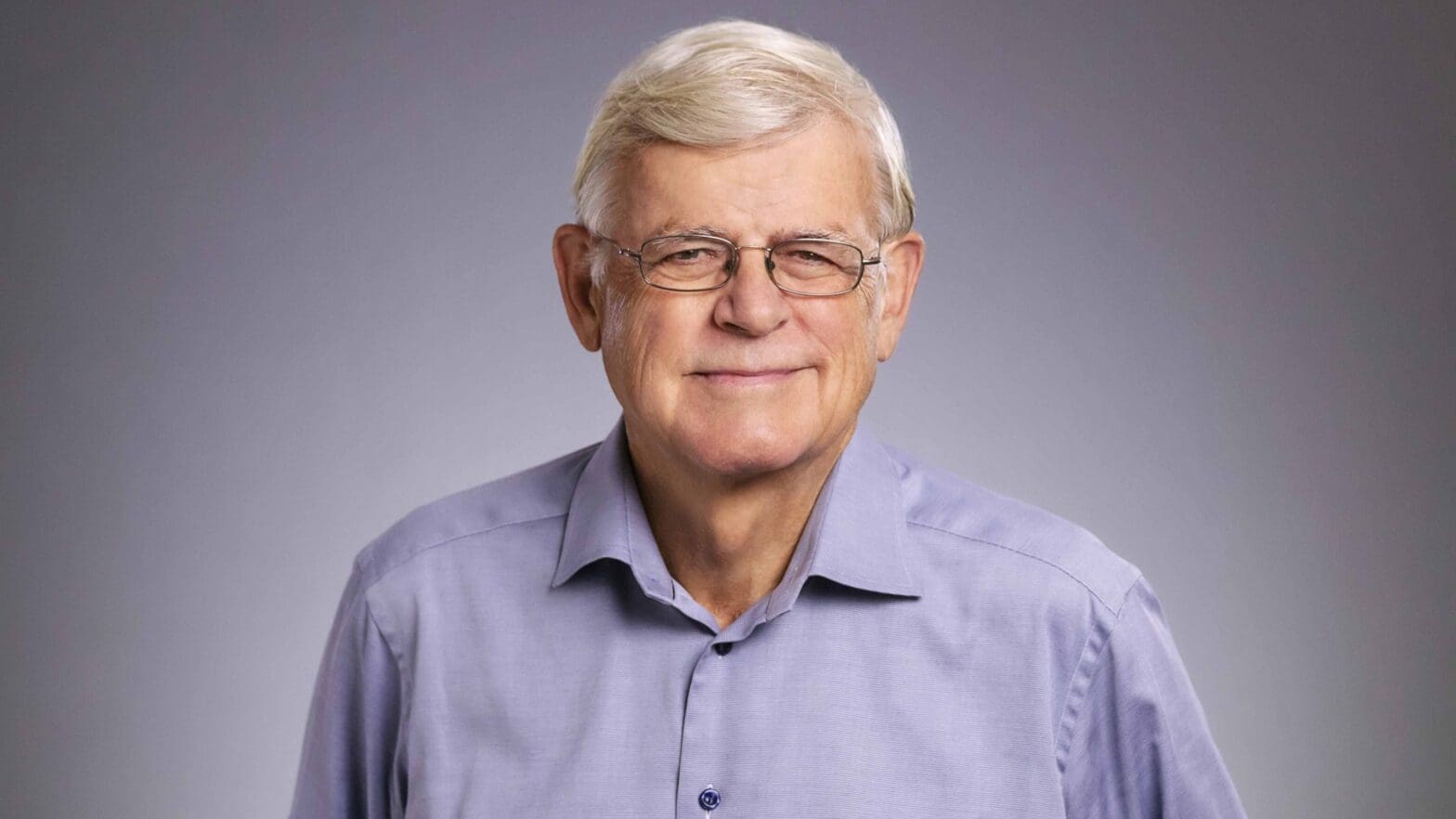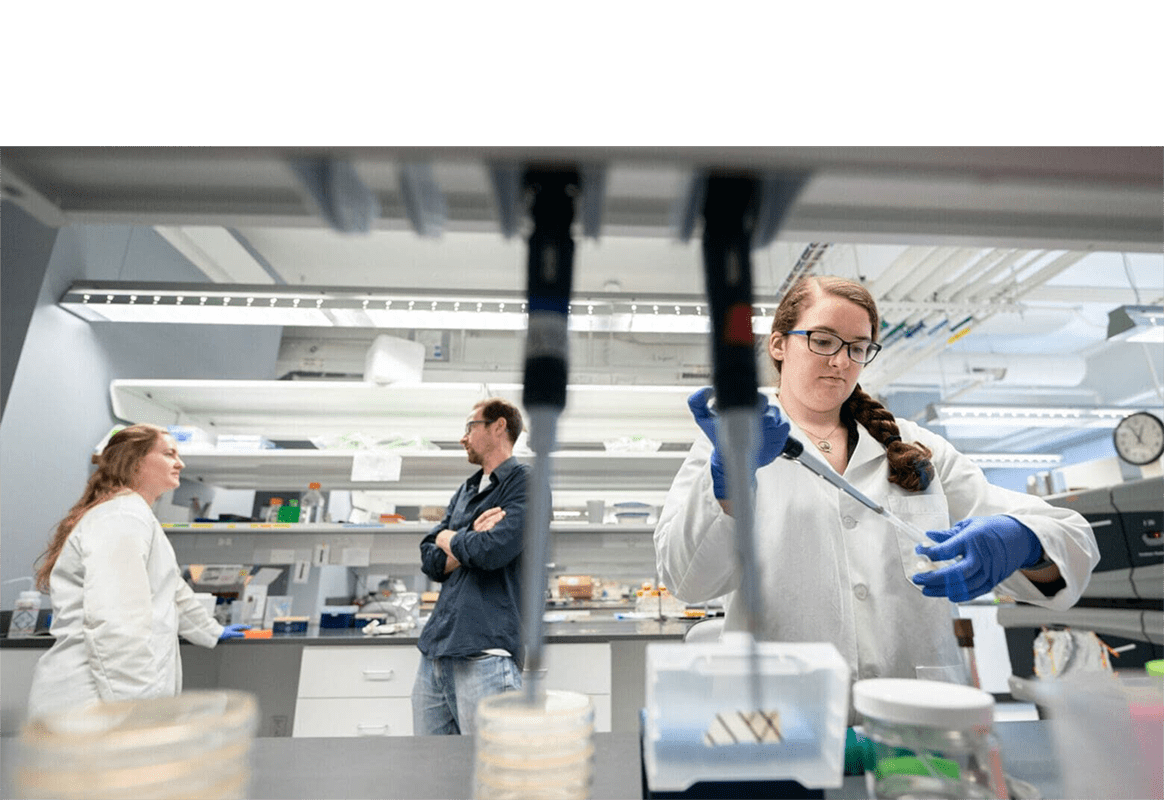
Part Seven: Computer Science at Princeton Engineering
By
on
This is from the series E100: Princeton Engineering’s 100th anniversary
#40
“Computing began here at Princeton with Alan Turing and Johnny von Neumann.” – Steve Jobs, opening the Computer Science building in 1989.
On the occasion of the 1989 opening of the Computer Science building, the day’s guest speaker, Apple founder Steve Jobs, expressed his debt to two founders of the field with strong ties to Princeton. Alan Turing, who earned his doctorate in mathematics from Princeton in 1938, is known as the father of computer science. He wrote a paper in which he imagined machines — now known as “Turing machines” — that could perform complex computations and simulate any algorithm. His vision was put on a path to being realized by John von Neumann, who had taught quantum statistics at Princeton from 1930 to 1933, before joining the nearby Institute for Advanced Study. While at IAS, he built the MANIAC machine, a six-year project that used “von Neumann architecture” that formed the basis for modern computers. Both Turing and von Neumann separately played important parts in bringing World War II to an end: Turing famously cracked the German “Enigma” machine code that revealed the location of their warships; and von Neumann played a key role in the Manhattan Project, which developed the first atomic bomb. They were just two of several founders of computer science with ties to Princeton, who also include the man who brought von Neumann to Princeton, Oswald Veblen, as well as Turing’s mentor at Princeton, Alonzo Church. In this photo, Computer Science Chair Jennifer Rexford and President Chris Eisgruber unveil the new portrait of Turing.
#41
Who is this pioneering mathematician-turned-computer scientist?
The pioneering MANIAC computer, the basis for all modern computing that followed it, was created at the nearby Institute for Advanced Study in Princeton by John von Neumann. In the early 1950s the device was used by a military weapons analysis group run by Princeton’s mathematics department, located on the Forrestal Campus. This group was active for four years, and was run by this longtime faculty member who bridged the early days of computing with the modern-day Computer Science department. What was his name?
It was Forman Acton ‘43 *44. The Analytical Research Group, a portion of the mathematics department located on Princeton’s Forrestal campus, recruited Forman Acton as its director. Acton, who had received a bachelor’s degree in engineering in 1943 and a master’s in chemical engineering in 1944, returned to Princeton in 1952 to work on military weapons with the group. The group’s work, which lasted four years, included contributions to the U-2 spy plane and the first anti-aircraft missile known as the Nike missile. While doing so, he became a specialist in using, and teaching others to use, the room-sized MANIAC computer at the nearby Institute for Advanced Study. The group soon acquired Princeton’s first computer of its own, an early IBM machine that was installed in a Forrestal Campus greenhouse. During this time, Acton worked with other computer pioneers on campus like statistician John Tukey *39, who coined the words “software” and “bit”; and Thomas Kurtz *56, co-inventor of the computer language BASIC. Acton would go on to transfer from mathematics to the Department of Electrical Engineering in 1955, and when the department spun off Computer Science in 1985, joined the new department until his retirement in 1989. During the later part of his career, he was a beloved teacher with a gift for translating complex matters into relatable language, and for preferring practical methods to deeply theoretical approaches. He died in 2014 at the age of 93.
#42
“It was a box full of electronics. No awareness at all of what the implications were.” – Willis Ware *51
While Willis Ware was working with John von Neumann at the Institute for Advanced Study on developing the computer that would become a blueprint for all that came after, he was also shuttling over to Princeton’s School of Engineering to get his doctorate in electrical engineering. He worked on designing high-speed electronic circuits for the project. “We were just doing a job, and it was an interesting kind of a job,” Ware said in George Dyson’s book on the era. “We didn’t have the big foresight and the big omniscience to see all the consequences.” Or as Dyson himself wrote, upon Ware’s passing in 2013: “The working architecture of the modern digital computer—gates, timers, shift registers, all the elements we take entirely for granted including how to implement an adder, not to mention random-access memory and the registers that keep track of it—has Willis Ware’s fingerprints all over it.” He later worked at the RAND Corporation for 55 years, where he oversaw a department that developed packet-switching technology that was a foundation of the Internet. During that time he formed strong views about computers’ threat to privacy, which sound prescient given all that has happened since. “The computer will touch men everywhere and in every way, almost on a minute-to-minute basis. Every man will communicate through a computer, whatever he does. It will change and reshape his life, modify his career and force him to accept a life of continuous change,” he wrote in 1966.
#43
Where was the first Princeton Computer Center located?
Computing at Princeton — or anywhere — wasn’t always as ubiquitous as it is today. Far from being able to carry a powerful processor in your pocket, students, faculty, or other researchers needing a computer in the ‘50s, ‘60s and early ‘70s had to go find one. IBM had a good relationship with Princeton — after all, its senior vice president was John McPherson ‘29, who majored in electrical engineering. The first computer Princeton University acquired for general use was an early-model IBM 650, which lived in the Gauss House, near where Thomas Sweet is today, starting in 1959 until it was returned to IBM in 1962. A military organization on campus, the Institute for Defense Analysis, acquired a computer in 1960, and in exchange for its space in present-day von Neumann Hall, the group allowed others throughout the University to use the device at night after locking down confidential information at the close of business each day. By 1961, it was clear there was a demand for a general-purpose computing center, and 1962, the first Princeton Computer Center opened its doors, where it stayed until its own building opened in 1969. Where was that original location?
When the Computer Center opened on the 300 floor of the new Engineering Quadrangle on November 1, 1962, above the present-day EQuad cafe, it answered a growing campus-wide hunger for computing power, especially from users from within the School of Engineering and Applied Science, as well as other areas of the sciences. Under its first director, electrical engineering Professor Edward J. McCluskey Jr., the center was home to a room-sized, punch-card-input, 197KB IBM 7090. It was the workhorse for many undergraduate projects and graduate theses. This model of computer, which ran on the Fortran programing language, was made famous in the movie “Hidden Figures” for its role during the Space Race. It was the first supercomputer to use transistors rather than vacuum tubes. To help people learn how to use the machine, the Computer Center offered lecture series in basic programming techniques, as well as individual consulting. In 1964, the machine was upgraded to an IBM 7094 by adding more memory and replacing some components; in 1967, it was replaced by an IBM 360/67. The Computer Center by that point was a bustling center of activity, with 33 full-time-equivalent employees, and campus officials knew it was time to expand. In 1969, the center moved into its own $2.2 million building at 87 Prospect Ave., outfitted with a special cooling system to keep the machinery at a constant temperature and humidity. The main machine at the new Computer Center was a 1.6 GB IBM 360/91 — three times bigger than the original 7094 model that had been in the EQuad, and with 10,000 times more memory, but just a fraction of the storage within the devices we carry in our pockets today.
#44
The founding of the Department of Computer Science
As microchips kept getting smaller, Computer Science kept growing, and it’s now the most popular undergraduate major on campus. Starting with eight faculty members in 1985, the department has grown to be one of the largest departments at Princeton and is preparing to move to a renovated Guyot Hall in the center of campus. The curricular offerings of the 46 faculty and 14 lecturers reach more than three-quarters of the students at the university. Robert Sedgewick arrived from Brown to become the first chair of the department, a role he played from 1985 until 1994, when he stepped down to concentrate on research and teaching. He is the William O. Baker *39 Professor in Computer Science. In this video, he speaks about the beginnings of the department.
#45
Who was the first Princeton Engineering graduate to become Computer Science chair?
There have been five chairs of the Department of Computer Science since it was founded in 1985. Two attended Princeton as students, and one of them received their undergraduate degree from the School of Engineering and Applied Science. Who is this Princeton Engineering alum?
Jennifer Rexford, the Gordon Y.S. Wu Professor of Engineering, received her degree in electrical engineering from Princeton in 1991. She joined the faculty of the Department of Computer Science in 2005 after working at AT&T Research. Her research focuses on computer networking. Rexford, however, isn’t the only chair in the department to study at Princeton. Andrew Appel, the Eugene Higgins Professor of Computer Science who preceded Rexford as department chair, earned his A.B. in physics from Princeton in 1981. In this video, Rexford discusses what makes the department special.
#46
“To the uninitiated, a computer is a formidable beast…” – Howard Strauss.
By the 1980s, it was quickly becoming apparent that computers were no longer the domain solely of engineers: they were becoming an essential part of everyday life, on campus and far beyond. Students around the University flocked to the Computer Center on Prospect Ave. to work on their own projects. Hungry to get better acquainted with the machines, students, faculty, staff, architects, and people in business and industry jammed into a three-day lecture series by Howard Strauss, associate director of the center, as he taught the fundamentals of computing, according to a 1983 series of articles on computing in Princeton Alumni Weekly. During this lecture, Strauss presented an important distinction: Just half of Princeton’s computer users at that time were writing programs. Many scientists, he said, know little about computers but make good use of those programs. Whereas 20 years earlier, room-sized computers could mainly be found in the EQuad, computers by this point were starting to be scattered across campus. But while the rest of the campus was catching the computer revolution, the cutting edge of computing remained in the EQuad. In the renamed Department of Electrical Engineering and Computer Science, students were programming in Pascal and FORTRAN. In Mechanical and Aerospace Engineering, students built a program to keep model trains from colliding. And researchers in Civil Engineering made liberal use of the Interactive Computer Graphics Lab, right there in the EQuad, to convert staid charts into color bar graphs, pie charts, maps, blueprints, and three-dimensional plots. Later in the decade, the University began building a decentralized computing network, an effort spearheaded by Ira Fuchs, then vice president for computing and information technology, and a cofounder of a precursor to the internet.










